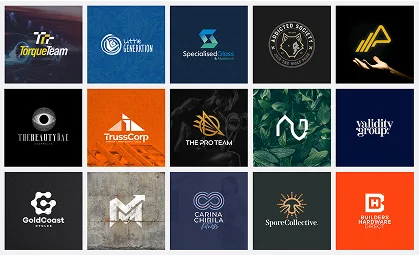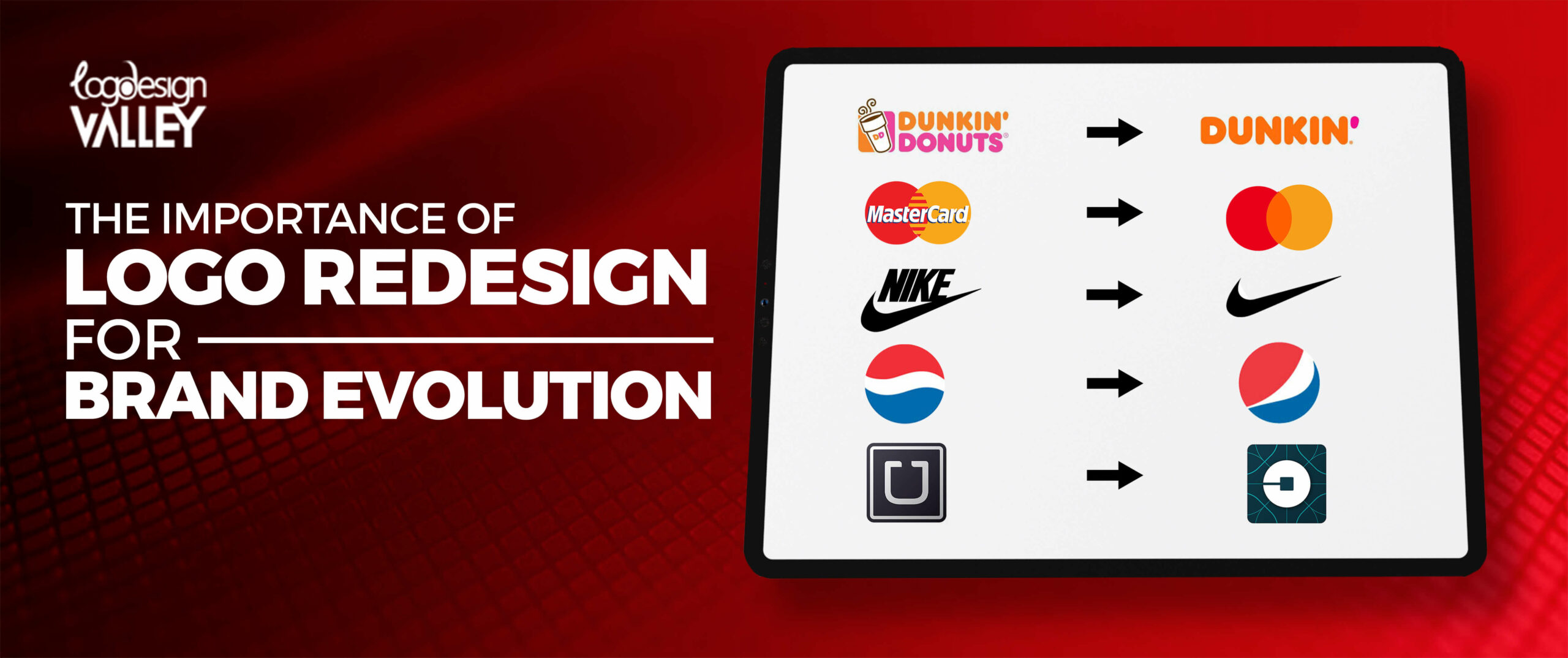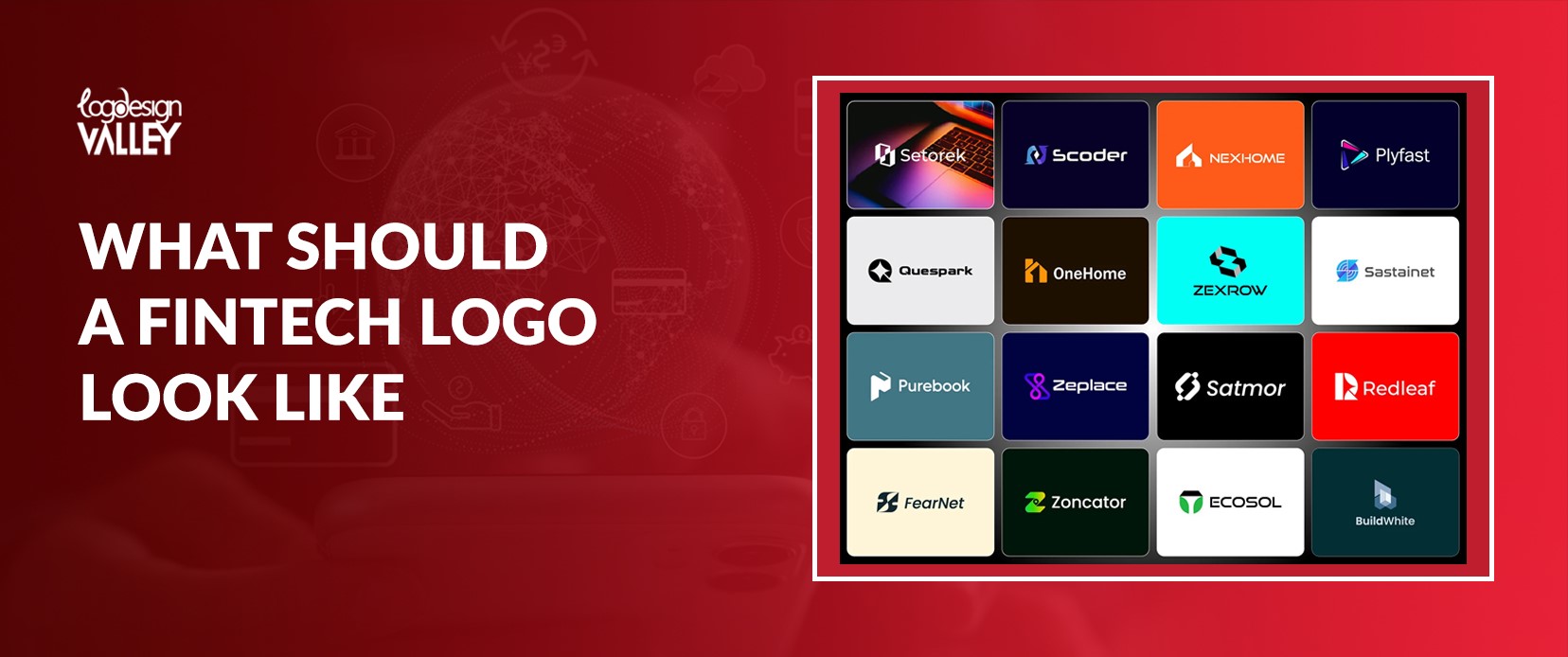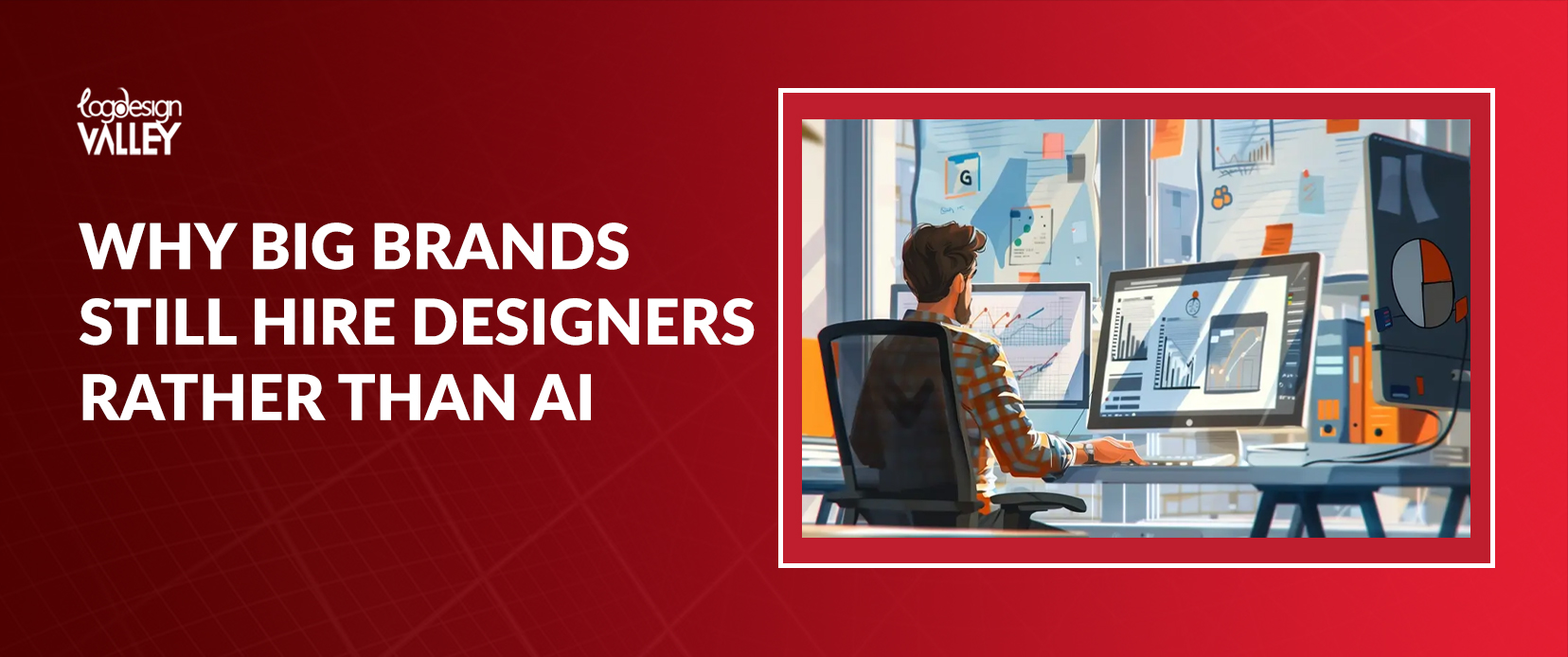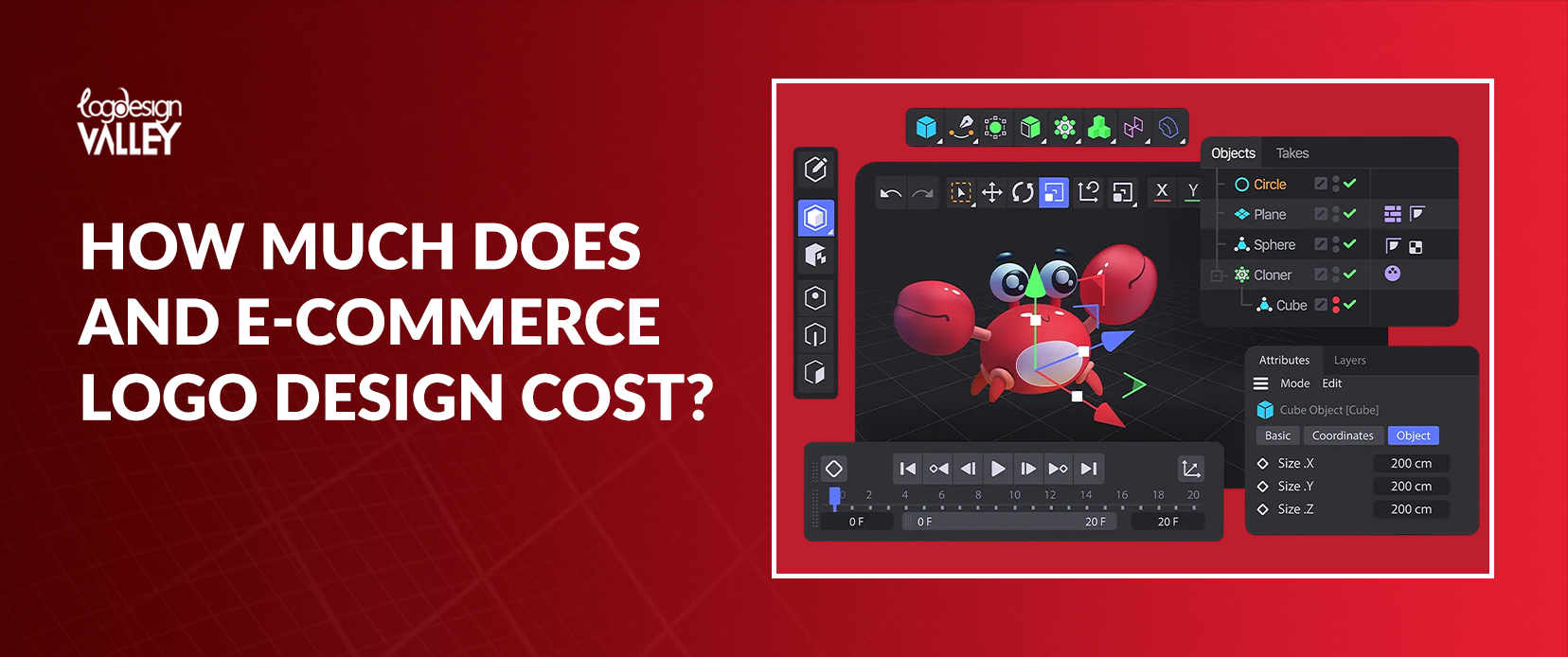Just like a good story, brands change and develop over time. When your brand expands, evolves, or desires more attention, it might be the right moment to think about rebranding your logo.
Consider your logo as the face of your brand. When something is old, exhausted, or no longer represents your current self, it’s time for a change. A brand can be revitalized by a new, contemporary logo that resonates with the desired audience.
Is your logo still meeting expectations? Is it perhaps now the moment to begin a voyage of brand transformation? Let’s delve in and investigate how a logo revamp could unlock your brand’s complete potential.
Revitalize Your Brand with a New Logo
Refresh your brand image and stay ahead of the competition.
Are you prepared to explore the impactful influence of a logo redesign? Continue to move down on the page!
When to Consider a Logo Redesign
Your logo needs to truly represent your company’s values and target audience. If your logo is not effectively fulfilling its purpose, it may be a good idea to consider making a change.
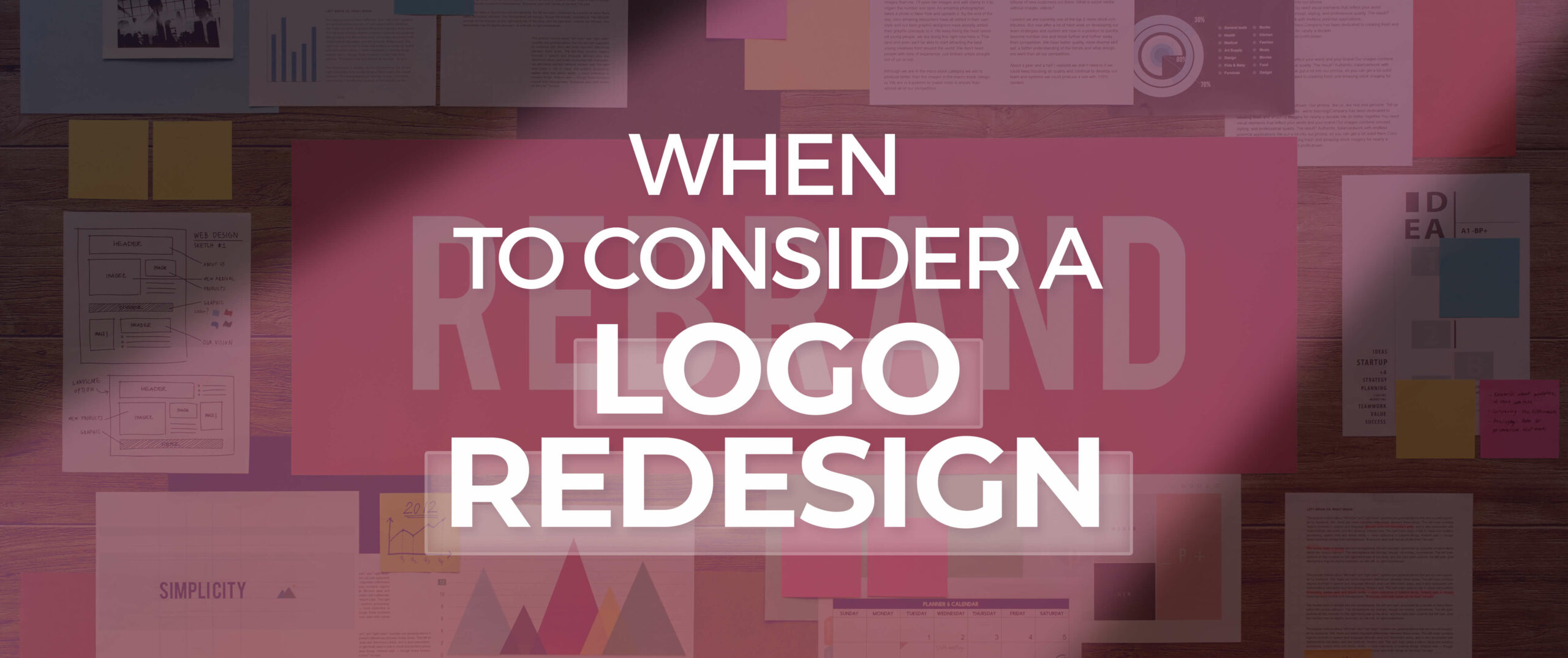
A Misaligned Logo and Brand Identity
Your logo represents the identity of your company. It must effectively reflect the character, principles, and demographic of your brand. If your logo no longer represents your identity or values, it’s time to consider a logo redesign. This is essential if your brand has transformed, grown its products, or shifted its focus market. An improperly positioned logo may create confusion for customers and weaken the message of your brand. A new professional logo design can assist in establishing a more powerful and genuine brand image that connects with your clientele.
Outdated Logo Design
An old logo can give your business a less credible and outdated image. Design trends change quickly, and something that was once considered modern can soon become outdated. If your logo appears to be from another time period, it’s time to update it. A new, modern logo can quickly refresh how your brand is perceived. It can assist in drawing in a younger, more tech-savvy crowd and presenting your business as progressive and inventive. Investing in updating your logo is investing in the future of your brand.
Rebranding or Mergers
A logo redesign is often required for significant business changes like rebranding, merging, or acquiring. Changing a logo can assist in creating a fresh identity, bringing together diverse brands, or indicating a new direction for your company. It’s a chance to design a logo that represents the fresh start in your business’s narrative. If you are entering new markets, introducing new products, or merging with another firm, redesigning your logo can assist in effectively conveying these changes to your target audience and preparing your business for expansion.
Redesign vs. Refresh – What’s the Difference?
| Feature | Redesign | Refresh |
| Scope | Complete overhaul of logo design | Minor adjustments to existing logo |
| Timeframe | Longer, more extensive process | Shorter, quicker process |
| Cost | Typically higher | Lower cost |
| Outcome | New logo with fresh look and feel | Updated logo with improved elements |
| Brand Impact | Can significantly change brand perception | Subtle changes to brand image |
Steps to a Successful Logo Redesign
When your logo no longer connects with your target demographic or represents your company’s growth, it’s time for a redesign. Let’s delve into the process of how to design a logo.
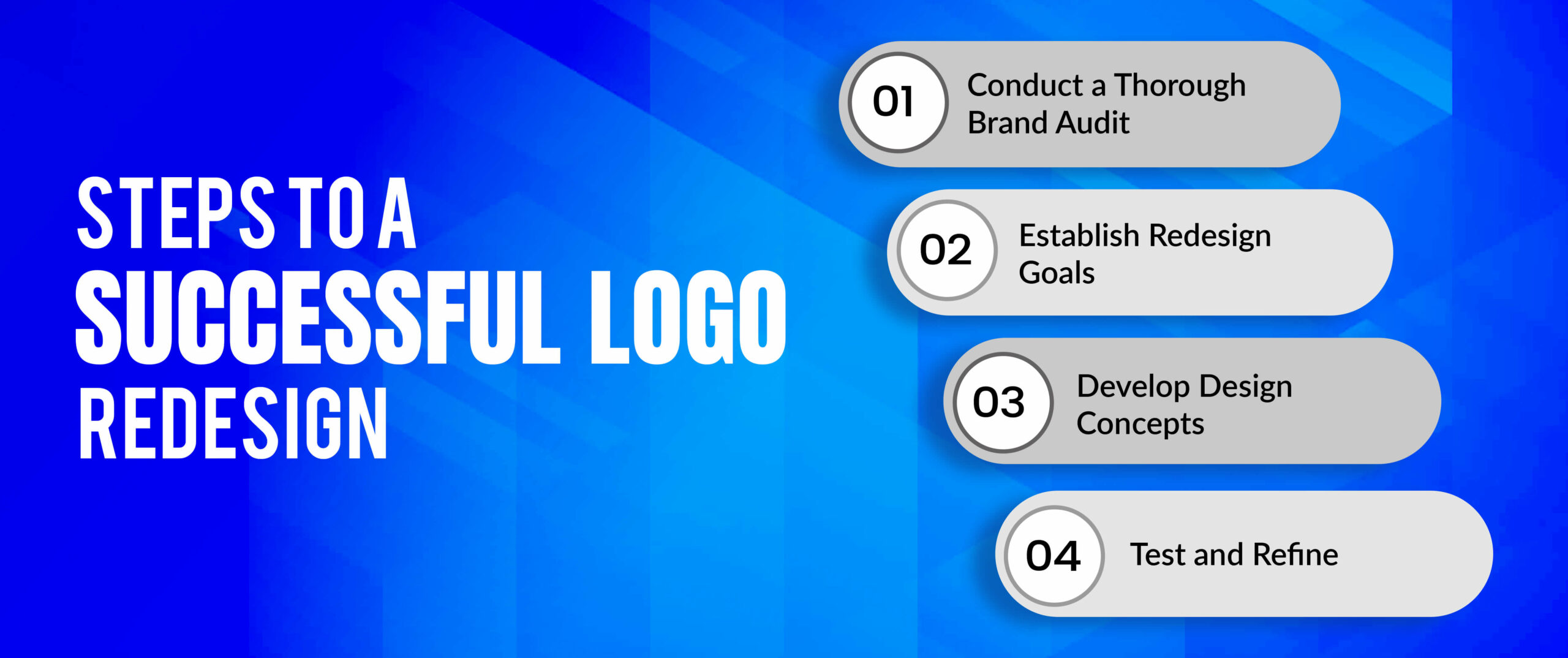
Conduct a Thorough Brand Audit
Prior to embarking on a logo redesign, it is essential to comprehend your brand’s current position. Conducting a thorough brand audit is similar to immersing yourself in the essence of your business. This includes reviewing your brand’s past, purpose, beliefs, audience, and rivals. Analyzing the strengths, weaknesses, opportunities, and threats of your brand can provide valuable insights on its performance and areas for enhancement.
Think about the visual elements that represent your brand, such as your logo, colors, fonts, and overall style. Assess how well these components match up with the personality and message of your brand. Furthermore, evaluate how well your brand messaging is working and connecting with your desired audience. Understanding the fundamental nature of your brand will establish a strong base for a successful logo revamp.
Establish Redesign Goals
It is crucial to clearly establish your objectives for the logo redesign in order to direct the design process effectively. What is your goal with the new logo? Are you looking to boost brand recognition, attract a different demographic, or just update your brand’s appearance? Your objectives will determine the redesign’s direction and aid in evaluating its efficacy.
Think about your business goals and how a new logo can help achieve them. Are you introducing new products or services? Considering expanding into different markets? Are you considering a brand makeover for your company? Your objectives must be defined, quantifiable, attainable, pertinent, and time-sensitive (SMART). Setting clear expectations will help ensure that the logo redesign is in line with your company’s overarching business strategy.
Develop Design Concepts
After getting a grasp of your brand and goals for redesign, it’s time to unleash your creative ideas. This is the start of all the excitement! Create various design ideas that embody your brand’s core and connect with your intended audience. Experiment with various styles, colors, fonts, and symbols to generate a range of choices.
Don’t hesitate to think creatively. Try out various strategies and expand the limits of your brand’s visual representation. The objective is to create a varied range of ideas that can be improved and expanded upon. Work together with designers who can help realize your ideas and provide new insights. Keep in mind, this is a period of exploration, so embrace trying new things and resist making hasty judgments.
Test and Refine
After choosing the ideal logo, it’s time to make it come alive. The phase of implementation includes introducing the new logo to all aspects of your brand. This consists of your website, social media channels, marketing collateral, product packaging, and brick-and-mortar stores. Maintain a strong brand identity by ensuring consistency in the logo’s appearance and usage. Keep in mind the logo size fits all types of screens.
Create a set of style guidelines to offer explicit instructions on the correct usage of the logo. This will assist in preserving brand uniformity across various platforms and media. Provide your employees with training on the new logo and its importance to the brand. Encourage them to correctly utilize the logo in their everyday tasks.
Track how the public reacts to the new logo and collect their opinions. This will assist you in recognizing any possible problems or areas that can be enhanced. Be ready to make changes if needed, but ensure to keep the fundamental aspects of the logo.
Some Famous Brand Redesigned Logos
Logos serve as the identity of a brand and, similar to individuals, they change over time. Several well-known brands have updated their logos to remain current and appeal to contemporary audiences. Now, let’s examine a couple of instances and some modern logo design ideas:
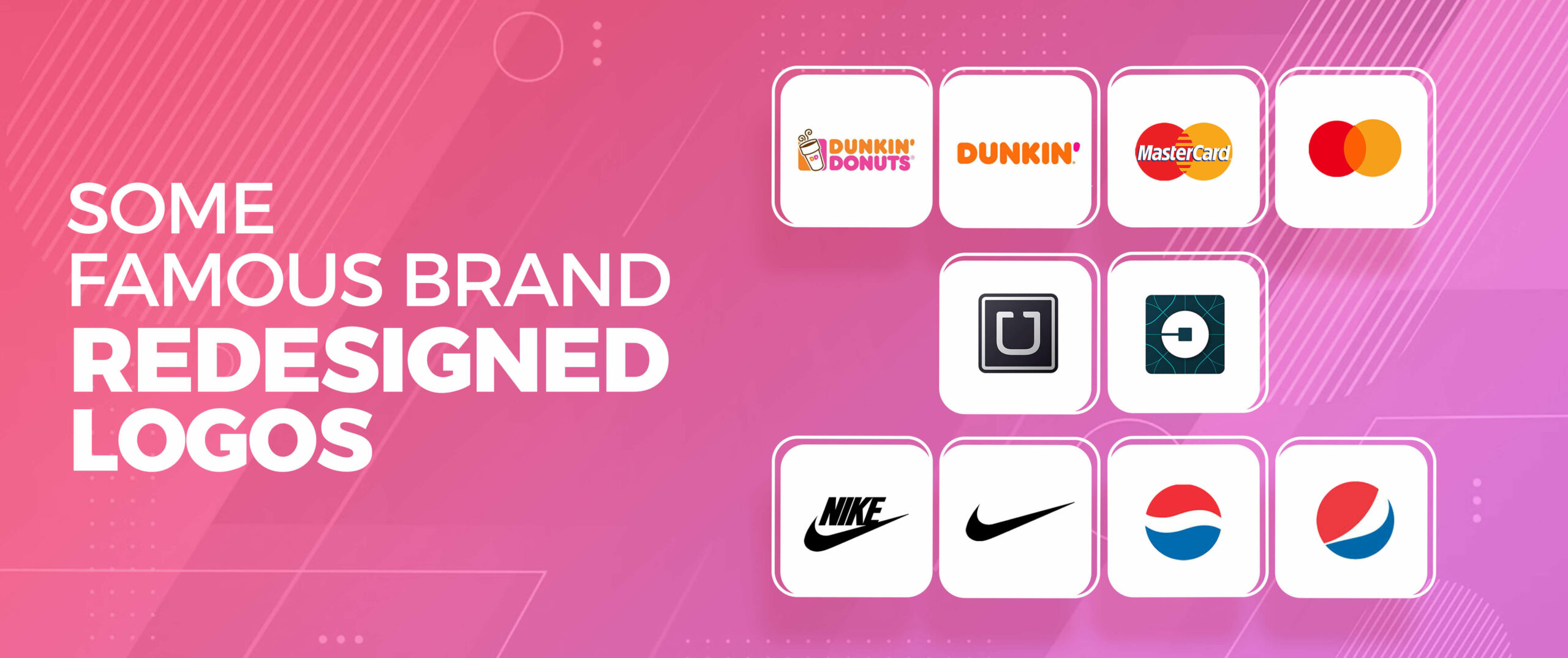
Pepsi
Pepsi, a massive international beverage company, has experienced various logo revamps over the years. The classic blue and red colors have stayed the same, representing youth, vitality, and enjoyment. Nevertheless, the typography and overall design have changed to mirror the shifting times. The brand has effectively preserved its fundamental essence while embracing contemporary styles, ensuring its relevance in a competitive market. The new pepsi logo has the best logo color combinations that can be your inspiration if you’re stuck finding the best color combinations.
Mastercard
The logo evolution of Mastercard is a shining example of successful branding. The initial intersecting circles were well-known, but the company understood the necessity for a design that was more versatile and flexible. The updated logo maintains the core of the original design but is now simpler and more versatile, suitable for different uses and platforms. It shows how the brand can change over time but still stay true to its essence.
Uber
The rebranding of Uber’s logo is a daring demonstration of a brand makeover. The initial logo, which had a black letter “U,” was substituted with a symbol that is abstract and dynamic. The company’s global presence and emphasis on technology are reflected in the new design. It deviates from the usual corporate logo and mirrors Uber’s role as a disruptive force in the transportation sector.
Dunkin’ Donuts
Dunkin’ Donuts changed its name to just “Dunkin'” to highlight its expanded menu options that go beyond just donuts. The change was also reflected in the logo redesign, which emphasized the traditional orange and pink colors while streamlining the overall look. This action placed the brand as a contemporary, accessible coffee and food spot, attracting a broader range of people.
Nike
Nike’s famous swoosh symbol is widely known around the world. Although the main swoosh design has stayed consistent, the brand has tried out various styles of typography and color schemes throughout the years. This development has enabled Nike to remain current while upholding its powerful brand image. The ease and flexibility of the swoosh have led to numerous variations, establishing it as one of the most triumphant logo designs ever created.
What to do with your new redesigned logo
Now that your updated logo is complete, it’s time to incorporate it into the essence of your brand. Start by ensuring all your digital channels are up to date, including your website, social media accounts, email signatures, and online ads. Maintain uniformity across all digital points of contact. Then, update your printed materials such as business cards, letterheads, brochures, and other marketing materials. If appropriate, revise product packaging to highlight the new logo more prominently.
Remember to also consider your physical environments. Revise the signage, office decorations, and any physical spaces related to your brand. Develop detailed style guidelines that guarantee uniform logo application on every platform. Educate your team about the brand’s new logo and why it is important.
Keep in mind that effectively executing a logo involves more than simply swapping out old pictures for new ones. It involves developing a unified brand experience that connects with your target market.
Conclusion
A carefully crafted logo has the potential to create a strong impression, influencing the way individuals view your company. Through knowing the right time for a redesign and following a well-thought-out process, you can develop a logo that accurately embodies your brand and leads to success.
Keep in mind that a logo should change as your business grows. If your existing logo no longer matches your brand’s identity or values, it may be necessary to think about updating it. By dedicating time and energy to the redesign process, you can develop a logo that not only appears fantastic but also aids in reaching your business objectives. hire graphic designer for logo who will make the best logo for your brand.
In the end, a successful logo makeover goes beyond just making a visually pleasing design. It involves creating a powerful brand image that connects with your desired market and stimulates expansion.


